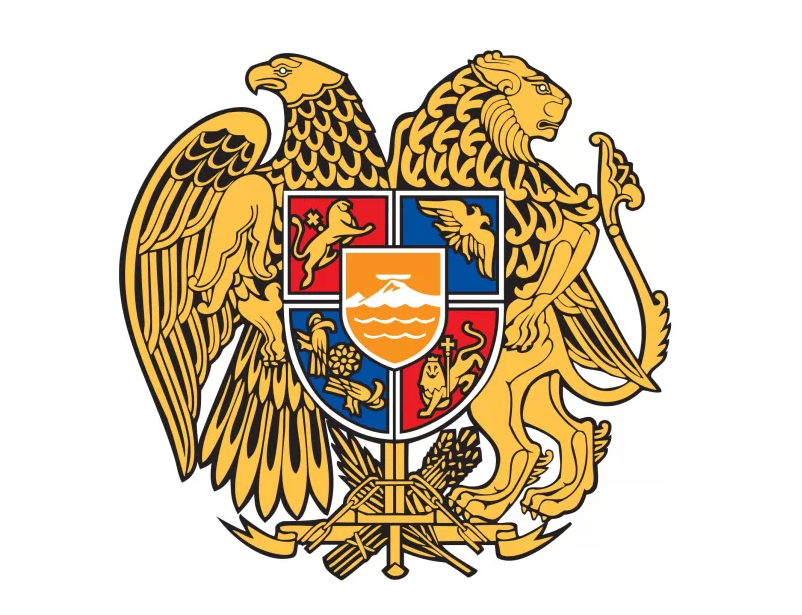Armenia National Emblem is a powerful representation of its rich history and culture. This emblem is a symbol of the Armenian people's resilience and their struggle for independence, and it reflects the country's strong ties to its ancient roots. In this article, we will take a closer look at the Armenia national emblem, its history, and its significance in Armenian culture.
Historical Background of the Armenia National Emblem
The national emblem of Armenia has its roots in the medieval Kingdom of Cilicia, which was a state that existed from the 11th to the 14th centuries. The emblem of the kingdom featured a lion holding a cross, which symbolized the strong ties between the Armenian Church and the Armenian state. After the fall of the kingdom, the emblem was forgotten for centuries until it was revived by the First Republic of Armenia in 1918.
Design Elements of the Armenia National Emblem
The Armenia national emblem consists of a golden eagle and a lion supporting a shield, which is decorated with a depiction of Mount Ararat. Mount Ararat has been a symbol of Armenian culture for centuries and is considered sacred by Armenians all over the world. The shield is surrounded by an oak and a laurel branch, which symbolize strength and victory, respectively.
Symbolism of the Armenia National Emblem
The Armenia national emblem is a powerful symbol of Armenian culture, history, and identity. The eagle represents the strength and freedom of the Armenian people, while the lion symbolizes their courage and bravery. The shield and Mount Ararat represent Armenia's history and its ties to the Armenian people's ancient homeland. The oak and laurel branch represent the country's resilience and its commitment to victory over adversity.
Legal Significance of the Armenia National Emblem
The Armenia national emblem has significant legal and political importance in the country. It is featured on the Armenian coat of arms and is a central element in many official documents and government buildings. The emblem is also featured on the country's currency, postage stamps, and official documents, and it is an important symbol of national identity and pride.
The Evolution of the Armenia National Emblem
The Armenia national emblem has undergone several changes since its inception. During Soviet times, the emblem featured a hammer and sickle, which were removed after the country gained independence in 1991. In 2006, the emblem was further modified to include the name of the country in Armenian, English, and Russian.
Frequently Asked Questions (FAQs)
- What is the significance of Mount Ararat in Armenian culture?
Mount Ararat is considered a symbol of Armenian culture and identity, as it is believed to be the resting place of Noah's Ark.
- Why was the hammer and sickle removed from the Armenia national emblem?
The hammer and sickle were symbols of Soviet communism, which was rejected by the Armenian people after the country gained independence.
- What is the meaning of the oak and laurel branch in the Armenia national emblem?
The oak represents strength and the laurel represents victory, symbolizing Armenia's resilience and commitment to overcoming adversity.
- How is the Armenia national emblem used in daily life?
The emblem is featured on the country's currency, postage stamps, official documents, and government buildings, and it is an important symbol of national identity and pride.
- What is the origin of the Armenia national emblem?
The emblem has its roots in the medieval Kingdom of Cilicia, which existed from the 11th to the 14th centuries.
Conclusion
The Armenia national emblem is a powerful symbol of Armenian culture, history, and identity. It represents the strength, courage, and resilience of the Armenian people, and it is a central element in the country's national identity. The emblem's historical significance, design elements, and symbolism make it a unique and powerful representation of Armenia's rich cultural heritage.
References
- "National Symbols." Government of the Republic of Armenia. https://www.gov.am/en/official/national-symbols/.
- "Coat of Arms of Armenia." Wikipedia. https://en.wikipedia.org/wiki/Coat_of_arms_of_Armenia.
- "National Emblem of Armenia." ArmeniaPedia.org. https://www.armeniapedia.org/wiki/National_Emblem_of_Armenia.
